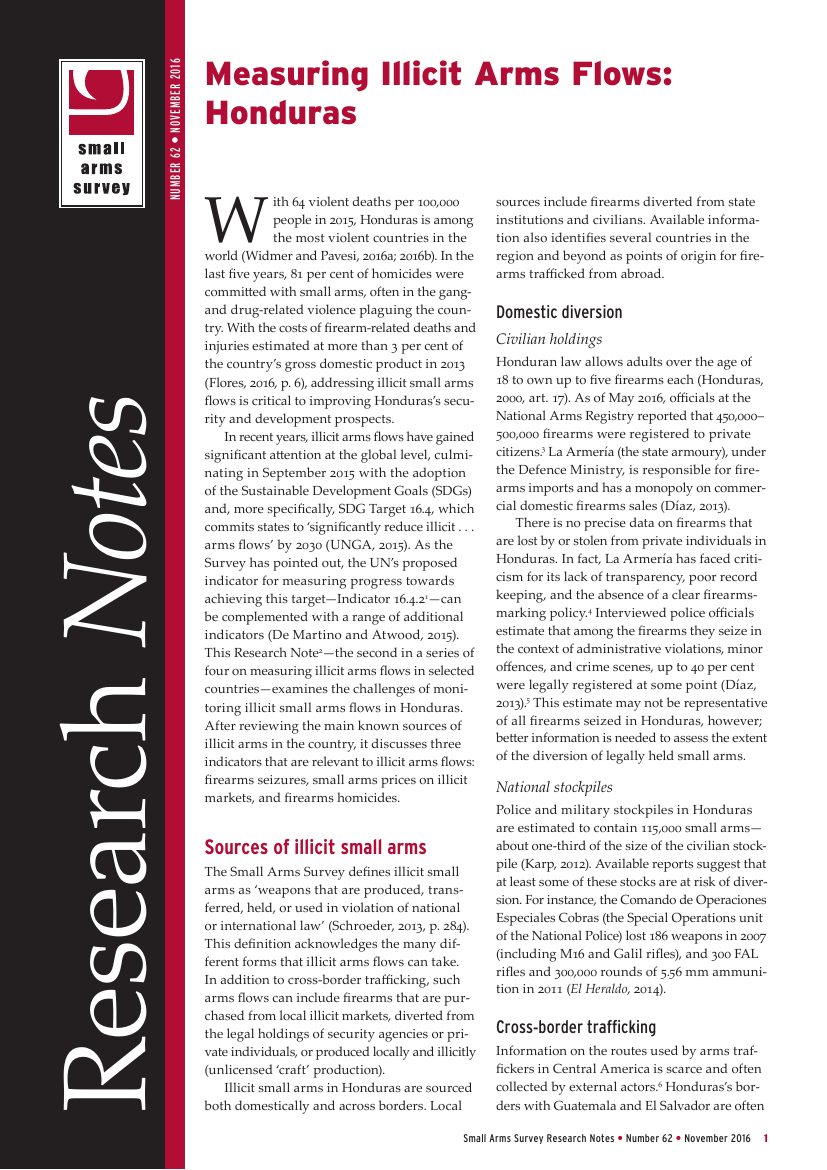
Measuring Illicit Arms Flows: Honduras (Research Note 62)
The Small Arms Survey has released a study on the challenges of monitoring illicit small arms flows in Honduras. Measuring Illicit Arms Flows: Honduras notes how understanding these challenges can help develop suitable indicators for measuring progress towards achieving Sustainable Development Goal Target 16.4, which commits states to ‘significantly reduce illicit. . . arms flows’ by 2030.
The study builds on the Survey’s previous work, which has pointed out that the UN’s proposed indicator for Target 16.4—Indicator 16.4.2: ‘[the] proportion of seized arms and light weapons that are recorded and traced’—can be complemented by a range of additional indicators. It begins by reviewing the main sources of illicit arms flows in Honduras. The study then discusses three indicators that are relevant to illicit arms flows: firearms seizures, arms prices on illicit markets, and firearms homicides.
This Research Note is the second in a series of four studies seeking to measure illicit arms flows around the world and, in so doing, better understand the type of information necessary to meet SDG 16.4. The study finds that an evidence-based approach to armed violence monitoring would generate important information on the effectiveness of efforts to reduce illicit arms flows and levels of armed violence. Establishing such an approach would benefit Honduras and could set a useful example to other countries as well.
Other findings from the study include:
- In the last five years, 81 per cent of homicides in Honduras were committed with small arms. During the same period, however, the proportion of homicides committed with firearms dropped, from 84 per cent in 2011 to 74 per cent in 2015.
- From 2012–2016, pistols and revolvers accounted for more than three-quarters of all firearms seized by the National Police in Honduras.
- Variations in the proportion of various types of weapons seized, rather than fluctuations in the overall number of arms seizures, can be more instructive for understanding changes in illicit arms flows.
- Data on three possible indicators to monitor illicit small arms flows—firearms seizures data, prices of illicitly sold firearms, and firearms homicide statistics—remains scarce and partial in scope, underscoring the need to put in place systematic data collection mechanisms in Honduras, as well as other countries.
Also available in SPANISH
Have your say about Small Arms Survey publications and products: take 5 minutes to fill out our questionnaire.